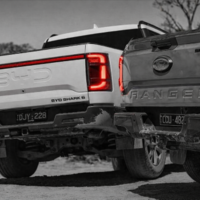The RedBook Insider: NVES Sparks Price Moves and a Pivot to PHEV
Whilst Australia’s New Vehicle Efficiency Standard (NVES) came into effect at the start of this year, the penalties only kicked in July 1. One month in, and brands are already adjusting prices and launching PHEVs to balance compliance and demand. Here’s what these early shifts mean for fleets, financiers and insurers in a changing market.
In the past month we’ve seen a few big-ticket price changes on internal combustion engine (ICE) models. While these moves aren’t purely down to NVES, they hint at how the market is recalibrating under a mix of new pressures and opportunities.
· Performance & Large SUVs Adjust Upward – Ford have lifted prices on its 2025 Mustang range by $5,000, while Nissan’s MY25 Patrol coincidently also saw a $5,000 jump in its price.
· Market Conditions Still Buoyant – Demand for these models and other ICE powered vehicles remains strong, so some brands appear to be banking margin now – potentially as a buffer against future compliance costs and tighter line-ups.
· Shifting the Sales Mix – In parallel, there are sharper deals and incentives appearing on hybrids and EVs as brands work to improve their emissions averages.
A tighter definition adds more pressure
Adding to the challenge is the revised definition of a “fuel‑efficient vehicle”, which from July 1 halves the qualifying threshold from 7.0 L/100 km to just 3.5 L/100 km. This change excludes most hybrids and almost all petrol or diesel vehicles from being classed as “efficient”, leaving mainly battery-electric vehicles and a select group of PHEVs to benefit. For OEMs, this raises the stakes and places further pricing and product‑planning pressure on their line‑ups.
PHEVs as the bridge
Another theme emerging quickly is the shift to plug‑in hybrids (PHEVs) as a “bridge” technology. Models like Toyota’s upcoming RAV4 PHEV, Mazda’s CX‑60 and CX‑90, Ford’s Ranger PHEVs, Skoda’s upcoming Kodiaq PHEV and the upgraded Mitsubishi Outlander PHEV are all either arriving or expanding their range. These brands and other well-established OEMs are scrambling to rebalance their largely ICE dominated portfolios to mitigate the looming NVES penalties.
For many OEMs, PHEVs are the middle ground – helping them meet emissions targets while giving buyers a taste of electrification at a time when pure BEV enthusiasm has cooled slightly.
What this means for your business
These shifts have implications for fleets, insurers and financiers. Our data can help you make sense of it:
· Track price changes in near real-time – Stay on top of OEM adjustments for ICE, hybrid and EV models.
· Understand powertrain mix trends – Spot how the growing PHEV mix is affecting model line-ups and fleet averages.
· Benchmark residual values – Monitor how these moves affect depreciation curves across powertrain types.
· Plan ahead with better forecasts – Anticipate supply and demand pressures as NVES compliance tightens.
It’s early days, but the market is already reshaping itself. Keeping a close eye on the data will be key to making confident, timely decisions over the next 12–24 months.
If you wanted to know more about NVES, click here.
Recent Posts
-
 The RedBook Insider: 2025’s Brand Value Leaders Revealed: See Which Auto Brands Outpaced the Pack17th December 2025
The RedBook Insider: 2025’s Brand Value Leaders Revealed: See Which Auto Brands Outpaced the Pack17th December 2025 -
 The RedBook Insider: Drive Safer with 2025 UCSR Insights17th December 2025
The RedBook Insider: Drive Safer with 2025 UCSR Insights17th December 2025 -
 The RedBook Insider: RedBook Launches PredictRV Pro, Used Car Price Forecast17th December 2025
The RedBook Insider: RedBook Launches PredictRV Pro, Used Car Price Forecast17th December 2025
